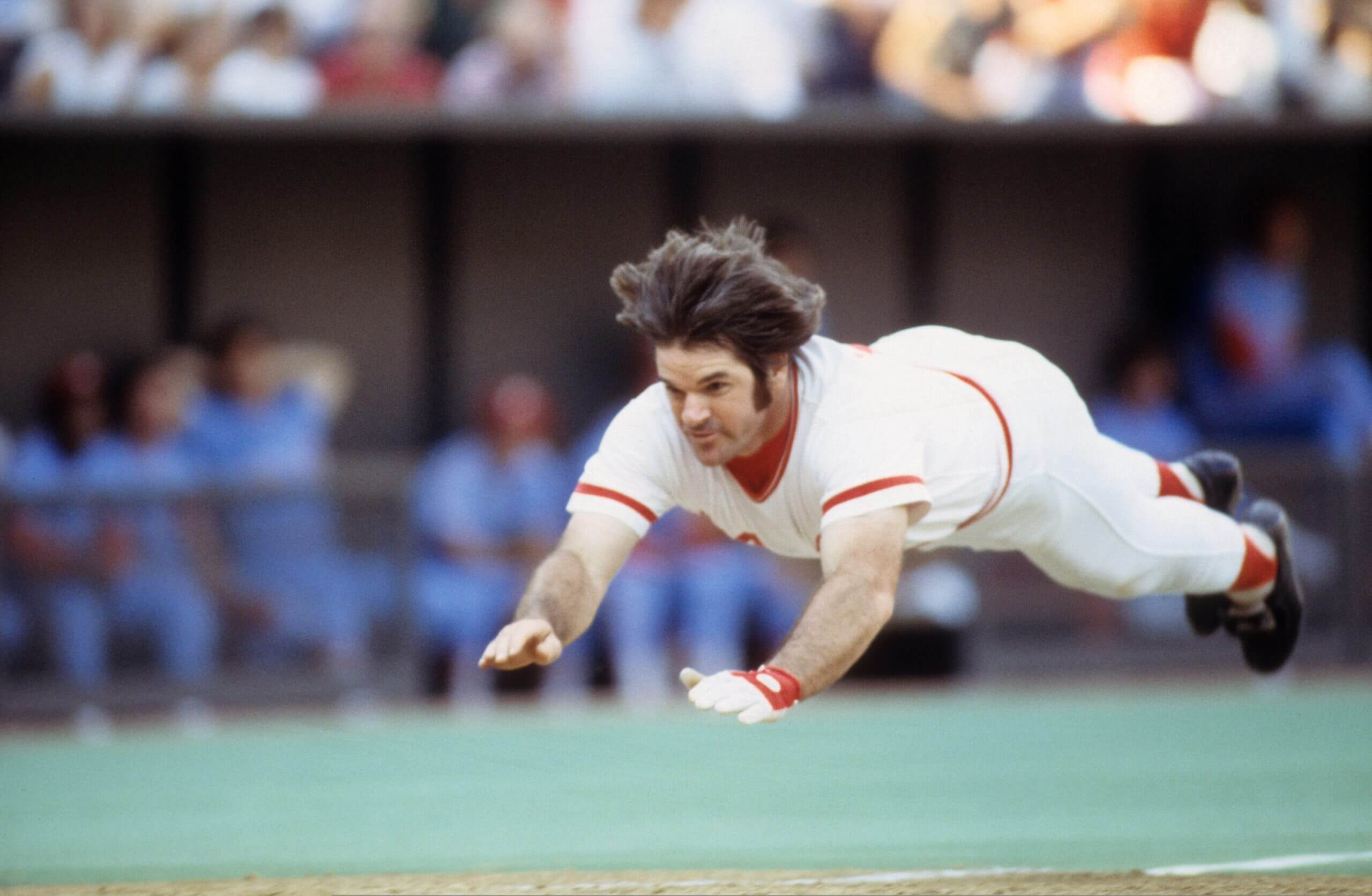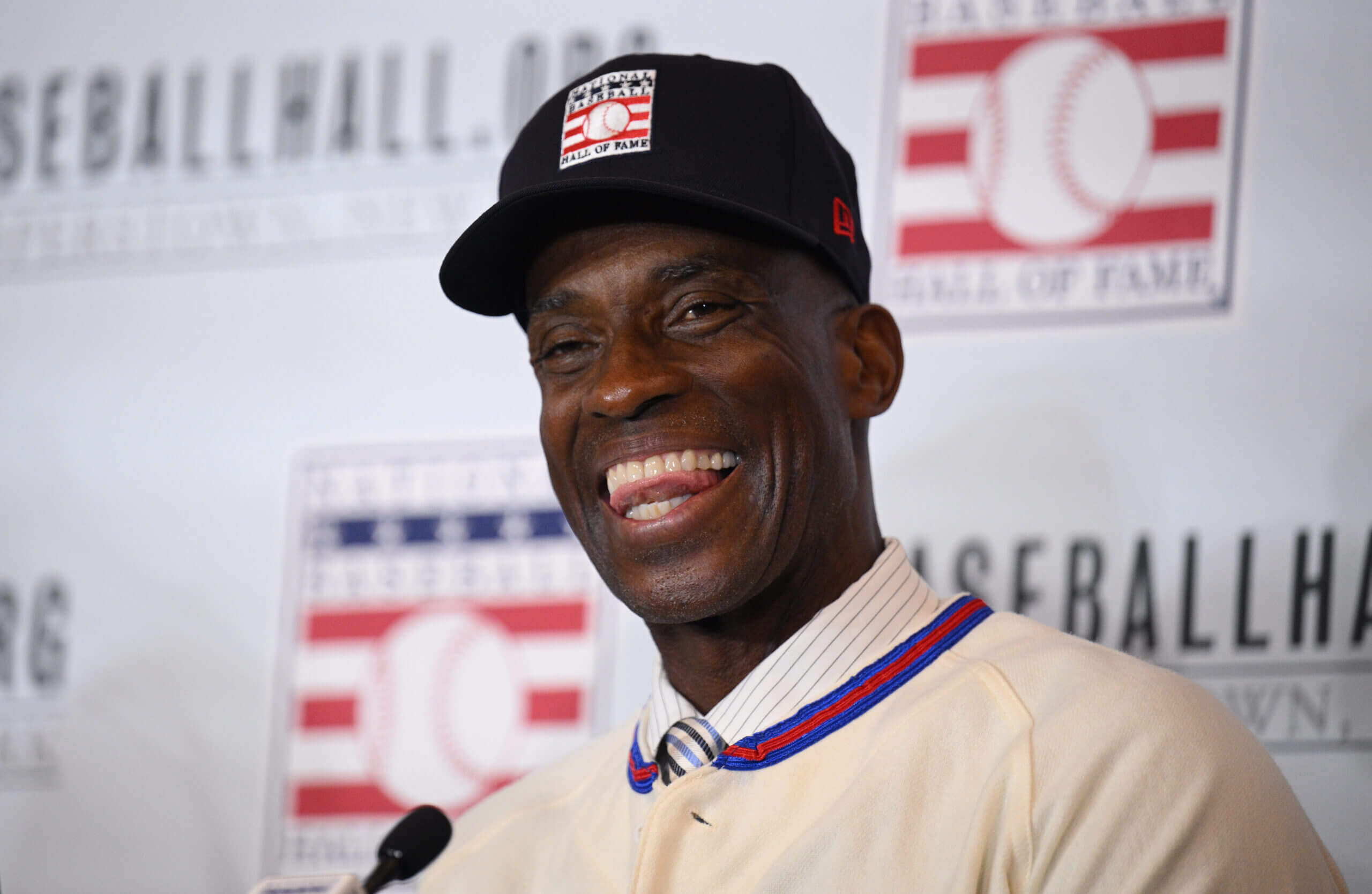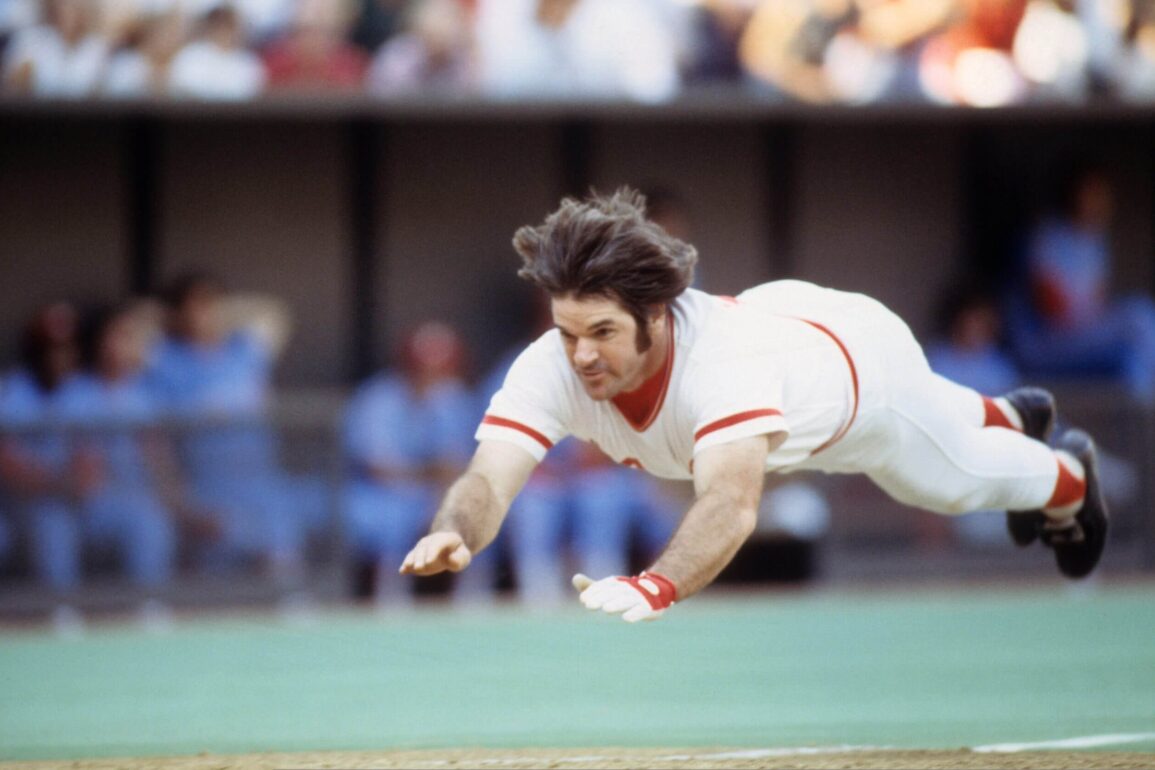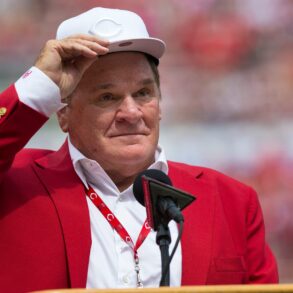If you didn’t look closely, you might have gotten the impression this week that Pete Rose got elected — or at least rubber-stamped — to enter baseball’s Hall of Fame. Not so fast!
Not only has Rose not been elected, but also he hasn’t even won the New Hampshire primary yet.
In truth, all MLB commissioner Rob Manfred did this week — by reinstating Rose and the other deceased players who had been on the sport’s permanently ineligible list — was open a path for Rose to appear on a Hall ballot for the first time.
Advertisement
Does that seem hard to comprehend? It’s a fact.
Rose may have been suspended from baseball way back in 1989. But in all those years, he never made it onto the baseball writers’ ballot or the ballots of any version of the Veterans Committee, simply because he always was ineligible for the Hall …
Until now.
So even though that has finally changed, his likely election day — via the Hall’s Classic Baseball Era Committee — is still nearly 1,000 days away. Obviously, that means a lot of things have to happen between now and then.
Would you find it helpful to know what those things are — and how that election will work when Rose’s time finally comes in December 2027? We can help with that.
Here are five things to know about the Hall of Fame committee process that now awaits Pete Rose.
1. How the committee works

Pete Rose’s path to a home in the Hall requires several steps. (John Iacono / Sports Illustrated via Getty Images)
The questions are already flying, because of course they are.
Is Johnny Bench on the committee? Is Tony Perez on the committee? Is Mike Schmidt on the committee? Will the committee be stacked with nothing but members of the Pete Rose Fan Club? Or could it be the opposite? Will the committee be overloaded with folks who have an ax to grind?
All right, breathe in and breathe out. Here’s an important announcement: We have no idea who will serve on that committee. That’s three era-committee elections from now. So the Hall of Fame is two years from even beginning the process of considering the makeup of that particular committee.
Here is what we know: Rose first has to make it through a screening committee — a group appointed by the Baseball Writers’ Association of America. That group, known as the Historical Overview Committee, will decide if he will even appear on the ballot.
Rose isn’t eligible for consideration any sooner because he played most of his career before 1980. So he can only be considered by the Classic Era Committee — and the committee election schedule was laid out years before this news.
Advertisement
Now let’s assume he clears that first hurdle — which seems likely, but is not guaranteed. He then would be voted on by the era committee in early December 2027, near the site of baseball’s Winter Meetings. Let’s repeat: We have no idea who will be voting that day. But we can at least tell you where those voters will be coming from in the baseball universe.
If recent history is any indication, the 16-member committee is likely to have six Hall of Fame players on it. Those players are usually, but not always, men who played in the same era as the players they are considering.
The other 10 members are longtime baseball executives and a handful of baseball writers/historians. Normally, the breakdown would be seven executives and three writers/historians, but that can vary.
Got it? Now here come the even bigger questions.
2. How does the process work — and how does it shape the outcome?
There are a lot of layers to that topic. So let’s divide it into three subquestions.
What does the committee do on election day? (Full disclosure: I was a member of the Classic Baseball Era Committee that elected Alan Trammell and Jack Morris in December 2017. So I can explain this process without revealing any specifics.)
The committee doesn’t just show up and vote. It meets for hours, in person. There is a long — sometimes very long — discussion of every candidate on the ballot. It’s a good guess that when Rose’s turn comes, they should bump back those dinner reservations because that might take a while.
Only after all that talking and debating does the committee vote. The members are instructed not to confer with each other beforehand and not to reveal whom they voted for afterward.
There are only three slots on each ballot. And to get elected, Rose would need votes from 12 of the 16 voters. The committee members learn later that night which player or players they elected. The public doesn’t get the big news until the next day.
Advertisement
Who decides who’s on the committee — and does that matter? A group of the Hall of Fame’s executives, historians and researchers are involved when it comes time to pick who will serve on the committee. The Hall’s board of directors has to approve those choices.
Then the Hall reaches out to the people on its list about a month before the election. But the outside world doesn’t learn the names of the committee members until they’re revealed publicly four days before the election.
The idea is to shield the committee members from potential lobbying, “helpful” advice and outside pressure of any sort. Good luck on that in this election.
Can the makeup of the committee literally determine the outcome? Welcome to the hottest-button topic in every one of these elections. As soon as the names of the committee members are announced, every amateur Hall of Fame historian out there will start digging in on the voters, their history, their connections, and how they think the vote is stacked.
There once was a time when there were excellent reasons for that. Would the controversial election of Harold Baines, in a 2019 era-committee election, have happened if Tony La Russa and White Sox owner Jerry Reinsdorf had not been on that committee? We can’t say for sure. But let’s just say that’s not a wacky conclusion.
So in recent years, it appears the Hall has taken greater pains to avoid those sorts of conflicts of interest. If that trend continues — and the committee is not packed with former teammates and golf buddies of the people on this ballot — it means there is almost no chance that Tony Perez or Mike Schmidt will be voting on Rose in 2027.
That’s an excellent concept in any election that happens in a small room, behind closed doors. It’s the best idea of the century in an election where the Hit King would be on the ballot.
Advertisement
So now it’s important to remember …
3. How hard is it to get 75 percent?
Are you familiar with math? Are you familiar with elections — of all shapes and sizes? It’s just that math — the 75 percent part — that makes election to the Hall of Fame so difficult and membership so exclusive.
If you’re running for dog catcher and you get 73 percent in a November election, you know what they call that? A landslide. If you’re on a Hall of Fame ballot and you get 73 percent, you know what they call that? Better luck next year.
So let’s start there. Can you even get three of your four best friends to agree where to get a refreshing beverage after work? It’s hard, right?
But stay with us. There’s even more math. And the odds are about to get longer.
In April 2022, the Hall changed this system to make it even more challenging for players on era-committee ballots to get elected.
One change was the shrinking of the ballot from 10 candidates to eight. So it’s more difficult just to get on the ballot. The even more impactful change is that committee members now are allowed to vote for no more than three candidates. That’s down from four.
So why does that make it harder? Your third-grade math teacher probably could explain it better, but think it through. There are now only a maximum of 48 total votes — down from 64. So start calculating how challenging it is, in that setting, for more than one candidate to be elected, let alone three or four.

Fred McGriff was elected to the Hall of Fame by the Contemporary Era Committee. (Orlando Ramirez / Imagn Images)
Take the 2023 Contemporary Baseball Era Committee election, just as an example. Fred McGriff got elected unanimously. So he took up 16 of the 48 total votes in the room all by himself.
That left just 32 slots for seven other candidates — in a field where those candidates normally have fairly similar credentials. Now let’s say the 13 non-media/historian members of the committee all had a favorite opponent they knew they wanted to vote for. See how this gets trickier?
Advertisement
All of a sudden, we’re down to 19 total votes left in the room — so if a second player is going to get elected, he needs to show up on nearly every remaining spot on all those ballots. Oh, it can happen — as the election of both Dick Allen and Dave Parker in December proved. But don’t even try to calculate the odds of electing three players. That’s now highly unlikely.
So the chances of any single player — or multiple players — getting elected are always going to be dependent on …
4. Who else might be on the ballot?
Let’s all agree that for most fans, that December 2027 Classic Era Committee election is going to be thought of as The Pete Rose Election. But you know who might disagree with that idea?
What about the friends and family of the late Luis Tiant. … Or the loyal supporters of Steve Garvey. … Or all the folks who were pulling for the men who didn’t get elected this past December, the last time this committee met: Tommy John, Ken Boyer and two fascinating Negro League figures, Vic Harris and John Donahue.
And that’s not all. It’s not hard to come up with the names of other intriguing pre-1980 candidates: Bobby Grich … Curt Flood … Graig Nettles … Rusty Staub … Roger Maris … Bill Freehan … not to mention …

Shoeless Joe Jackson and Pete Rose could appear on the ballot together in 2027. (Sporting News via Getty Images)
Shoeless Joe was also summoned from the corn fields and brought back to ballot life by the commissioner’s ruling this week. So suppose he’s also a candidate in this very same election? As we’ve laid out for you, the more is not the merrier.
(An aside: Don’t start banging out angry comments here about other overlooked not-in-the-Hall favorites like Dale Murphy, Lou Whitaker, Keith Hernandez and Dwight Evans. They’re all under the auspices of the Contemporary Era Committee, not this one. That committee focuses on post-1980 candidates.)
So sure, Rose is the most famous and most significant name likely to show up on that ballot. But he’s not alone. And he’s not automatic. And for one more reminder of that …
5. Bonds and Clemens remind us anything can happen
It was only about two and a half years ago, in December 2022, that Barry Bonds and Roger Clemens appeared on one of these committee ballots for the first time. How’d that work out?
Advertisement
In their 10th and final spin through the writers’ election cycle, they were each reeling in nearly two-thirds of the vote and within 40 votes of getting elected. Less than a year later, when their second-chance cycle kicked in with their first appearance on the Contemporary Era Committee ballot, they never even got their names hung on the leaderboard.
McGriff — the poster boy for the Clean Sluggers of America — sailed in unanimously. Don Mattingly (eight votes), Curt Schilling (seven) and Dale Murphy (six) were next.
But Bonds and Clemens, PED era poster boys, got so little support, the Hall lumped them into a group whose vote totals weren’t even released, because they didn’t even muster four votes apiece. Also in that neighborhood: Albert Belle and a fallen member of the 3,000-Hit, 500-Homer Club, Rafael Palmeiro.
The members of that committee followed orders and never said publicly why they voted the way they did. But is it that hard to guess? Doesn’t seem that hard.
So at the very least, Bonds and Clemens serve as helpful reminders of two important lessons that will apply to the Hit King election in 2027:
A) Controversy and massive attention are nothing new in these elections — and the Hall of Fame has been there, done that and handled whatever came with it.
B) You think the Hit King is a lock to get elected that day, just because he got more hits than anyone who ever played in the big leagues? Bonds and Clemens are here to reinforce a lesson you should probably write down and store in your phone. It goes like this:
There is only one thing we truly know about these elections … and that is that we don’t know anything about these elections … until they happen.
(Illustration: Demetrius Robinson / The Athletic; Diamond Images / Getty Images)
This post was originally published on this site be sure to check out more of their content.







